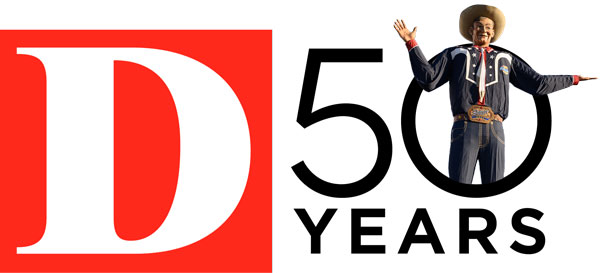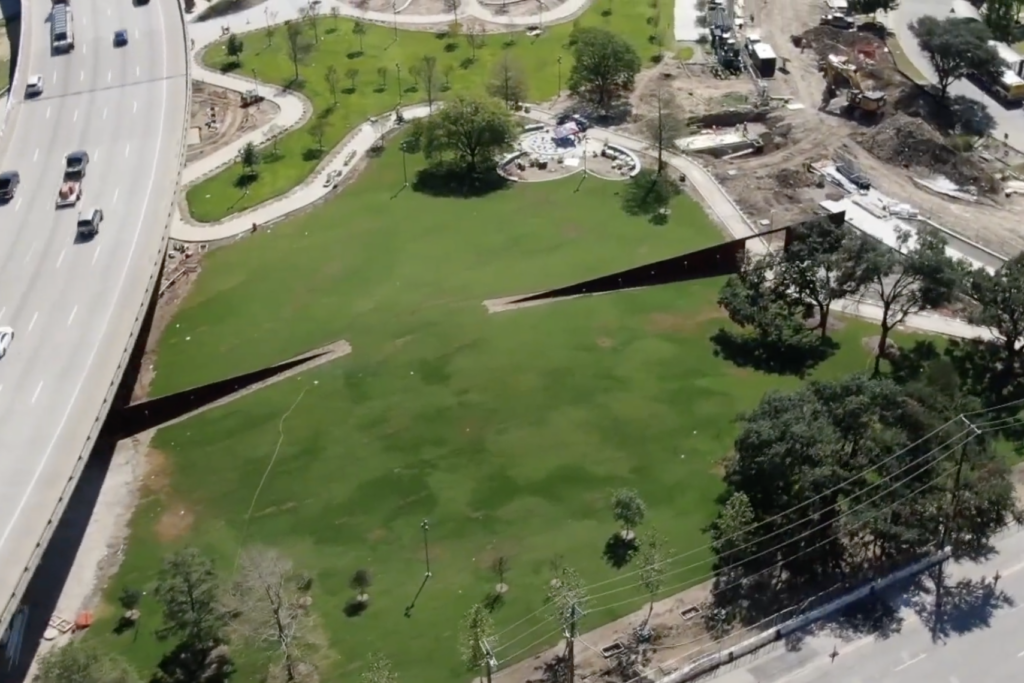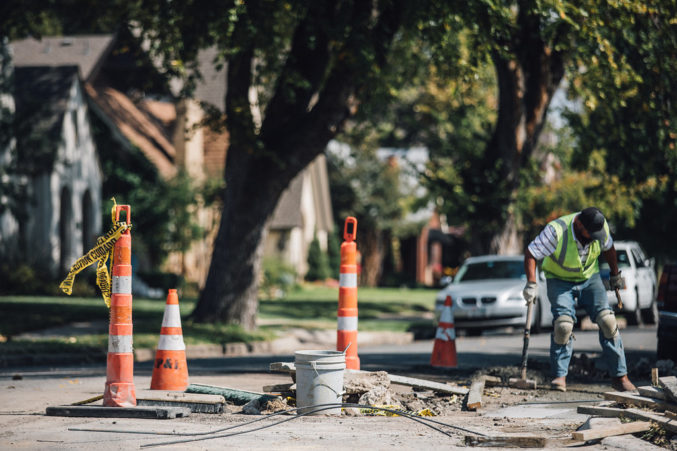To link three unconnected plots of land for a park on the eastside of downtown, the city of Dallas turned to the artist Robert Irwin under the direction of the National Endowment of the Arts. Irwin in 1981 produced Portal Park Piece (Slice), a 700-foot-long metal wall that stretched north-to-south along John Carpenter Plaza.
On May 3, the 5.6-acre Carpenter Park will open where the plaza once was, and Irwin’s work will be a centerpiece that frames a mound of grass. Parks for Downtown Dallas on Monday released a very good 10-minute documentary about all of this: how the piece came to be, how the city allowed the piece of public art to fall into such a state of disrepair that Irwin agreed that it should be removed. He called it “obsolete.”
“We can’t be a city that demolishes a Bob Irwin,” says Mary Margaret Jones, a landscape architect with Hargreaves Jones.
As Doyle Rader wrote for us in 2016, George Hargreaves struck up a friendship with Irwin in the early 2000s. The firm landed the contract with Parks for Downtown Dallas, and Hargreaves made it a point to bring the work back and center it in the park.
In the documentary, Irwin seemed energized by the prospect. He sent Jones a Chanel No. 5 perfume box with rolled up papers inside—he had a vision for how Portal Park Piece (Slice) could fit in the new project. Instead of north and south, Irwin shifts the work to go east-west. He adds a panel of filigreed stainless steel, accented with shapes meant to resemble leaves from the trees on the site.
Jones interprets it thusly: “I’m repositioning the piece on the site and I’m repositioning the piece within the history of my own work.”
Previously, the art was almost hidden; “I would say most people probably didn’t even see it when they were flashing by in their car,” Irwin says. Now it is a key feature of downtown’s largest park, framing how the public considers the space in a new way. And it won’t fall into disrepair the way it did in the past: the Howard Earl Rachofsky Foundation offered $300,000 for maintenance “in perpetuity.”
You can watch the documentary right here. Dallas filmmaker Quin Mathews is behind the doc.
Get the FrontRow Newsletter
Author





